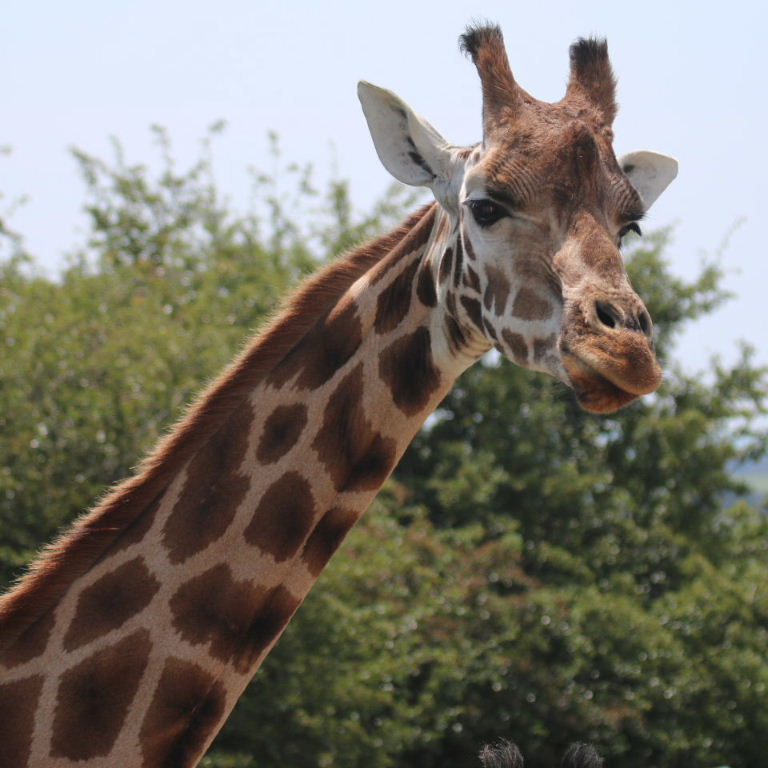Giraffe Giraffa camelopardalis/giraffa/reticulata/tippelskirchi


The Giraffe, the tallest land mammal (up to 20 feet tall), is well-known for its extremely long neck. Giraffes are native to sub-Saharan Africa.
Its height and long neck allow it to reach leaves well out of reach of other terrestrial animals.



Giraffes live in small, non-constant groups, mainly females, calves and young adults with occasional, itinerant males. They are polygamous.

 Both males and females have small horns on their heads.
Both males and females have small horns on their heads.

The Latin name comes from "camel" and "leopard" and the first giraffes were described as like long-necked
dromedary camels with leopards' spots and were called "camelopards".


Giraffes used to be considered as one species with several (7-9) subspecies, distinguishable mainly by the patterns of their coat.
In late 2016 they were divided into four species on DNA evidence, confirmed in 2021 and 2024 studies:
Northern (Giraffa camelopardalis), including the West African, Kordofan and Rothschild/Nubian subspecies,
Reticulated/Somali (G. reticulata),
Masai (G. tippelskirchi), including Masai and Thornicroft's subspecies,
and Southern (G. giraffa), including South African/Cape and Angolan/Namibian subspecies.



The Baringo Giraffe, previously Giraffa camelopardalis rothschildi, above left,
also called the Ugandan and Rothschild's Giraffe but now classed as an "ecotype" in with the the Nubian, is critically endangered.
They are the tallest and rarest of the three previous species/subspecies from East Africa.
Others are extremely rare, including the nominal Northern subspecies, the Nubian Giraffe of south Sudan/Ethiopia,
Giraffa c. camelopardalis
which is rare in the wild and in captivity (and now is classed as including the Baringo/Rothschild).



The Kordofan Giraffe, above, G. c. antiquorum,
(now also part of the Northern species group with the Nubian and the pale-coated West African,
G. c. peralta of Niger) is native to Central Africa (Cameroon, Chad,
Central African Rep., DR Congo and possibly western Sudan). It is critically endangered through habitat loss and poaching
for meat and skins.



The Reticulated Giraffe, above, Giraffa reticulata, previously
G. camelopardalis reticulata, also called the Somali Giraffe, with its distinctive warm red coat with large, fairly solid-edged,
close pattern, is also native to East Africa: north-eastern Kenya, Ethiopia and Somalia. It is also rare and endangered.



The most numerous Giraffe is the Masai Giraffe of Kenya and Tanzania (not shown here),
with smaller, wide-spaced, jagged, dark blotches. It is also endangered by habitat loss and poaching.



The next most numerous is the South African Giraffe (also called Southern/Cape),
G. giraffa giraffa, shown above with a young Cape/Rothschild hybrid
in the foreground. The Southern/Cape pelage is warm brown irregular shapes on light tan and has spots all the way down to the hooves.
It is classed as vulnerable.


